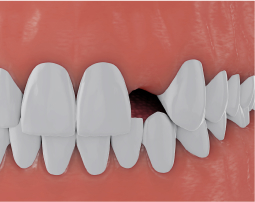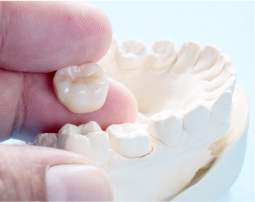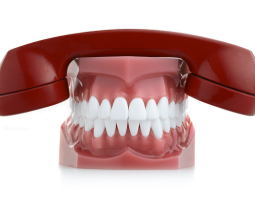
What Is A Sealant?
A dental sealant is a thin plastic film painted on the chewing surfaces of molars and premolars (the teeth directly in front of the molars). Sealants have been shown to be highly effective in the prevention of cavities. They were developed through dental research in the 1950s and first became available commercially in the early 1970s.
How Effective Are Sealants?
Scientific studies have proven that properly applied sealants are highly effective in protecting the tooth surfaces from caries. Because sealants act as a physical barrier to decay, protection is determined by the sealants ability to adhere to the tooth. As long as the sealant remains intact, small food particles and bacteria that cause cavities cannot penetrate through or around a sealant. In fact, research has shown that sealants actually stop cavities when placed on top of a slightly decayed tooth by sealing off the supply of nutrients to the bacteria that causes a cavity. Sealant protection is reduced or lost when part or all of the bond between the tooth and sealant is broken.
How Are Sealants Applied?
Sealant application involves cleaning the surface of the tooth and rinsing the surface to remove all traces of the cleaning agent. An etching solution or gel is applied to the enamel surface of the tooth, including the pits and grooves. After 15 seconds, the solution is thoroughly rinsed away with water. After the site is dried, the sealant material is applied and allowed to harden by using a special curing light. Other sealants are applied and allowed to harden much the same way nail polish is applied to fingernails. Sealant treatment is painless and could take anywhere from five to 45 minutes to apply, depending on how many teeth need to be sealed. Sealants must be applied properly for good retention.
How Long Will A Sealant Last?
Sealants should last five years, but can last as long as 10 years. One study reported that seven years after application, an impressive 49 percent of treated teeth were still completely covered. Sealants should not be considered permanent. Regular dental check-ups are necessary to monitor the sealants’ bond to the tooth.
Who Should Receive Sealant Treatment?
Children, because they have newly erupted, permanent teeth, receive the greatest benefit from sealants. The chewing surfaces of a child’s teeth are most susceptible to cavities and the least benefited by fluoride. Surveys show that approximately two-thirds of all cavities occur in the narrow pits and grooves of a child’s newly erupted teeth because food particles and bacteria cannot be cleaned out. Other patients also can benefit from sealant placement, such as those who have existing pits and grooves susceptible to decay. Research has shown that almost everybody has a 95 percent chance of eventually experiencing cavities in the pits and grooves of their teeth.
Improve your oral health with Ascent Family Dentistry
Dental Solutions For You

Are you missing a tooh?

I have a broken tooth. Help!

I want to feel confident about my smile.

I’m in pain. What do I do?

My snoring is keeping everyone awake!

I have questions about dentures. Can you help?

But I’m afraid to visit a dentist!

My gums are bleeding. Something’s not right!

